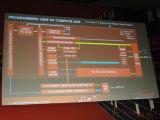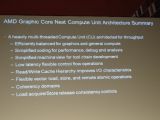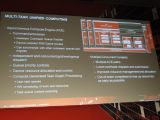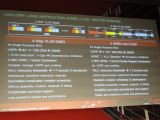At this year's Fusion Developer Summit, AMD has released some interesting information about its next-generation graphics core, which seems to dump the traditional design used in contemporary GPUs in favor of a much more FPU-like architecture.
The 2011 edition of the FDS opened its gates on June 13 and is scheduled to host a number of keynote presentations until June 16, when AMD closes the event.
One of these presentations took place earlier today and was held by Phil Rogers, AMD corporate fellow, which talked about the company's next-generation graphics architecture.
Compared to current AMD GPUs, this new design will bring forth a series of important changes, as the company plans to abandon the current VLIW instruction format and move to SIMD wide-vector execution.
In addition, the GPUs based on the next-generation architecture will sport L1 and L2 read/write caching, out of order resource allocation, ECC data protection on SRAMs and global memory as well as parallel primitive setup support.
Basically, the changes will make the silicon look and function a lot more like the FPU found inside current CPUs than a graphics processing unit.
On the long term, this could help AMD move towards a more heterogeneous chip design that should benefit their accelerated processing units.
AMD hasn't mentioned anything about when they plan to introduce this new architecture into their graphics hardware. The Radeon HD 8000-series would be the most likely candidate, since HD 7000 design was already taped out earlier this year.
Also at this year Fusion Developer Summit, AMD has presented the first working Trinity accelerated processing unit. This was installed inside a presentation notebook and it played an HD video.
Trinity is the first AMD APU to be based on the high-performance Bulldozer x86 CPU cores and is expected to make its debut in 2012. (via PC Perspective)

 14 DAY TRIAL //
14 DAY TRIAL // 




